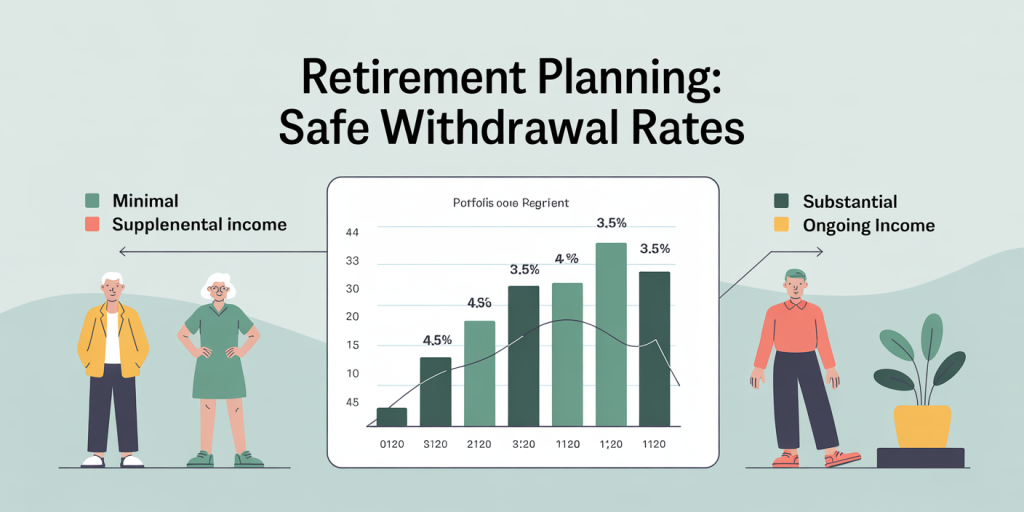Planning for retirement is one of the most critical financial decisions a person can make. Knowing how much money you need to retire comfortably can save decades of worry and prevent unwelcome surprises in later years. Despite this, many people either overestimate or underestimate the amount required to stop working, leading to either unnecessary constraints or financial instability. This article will dissect the various factors influencing retirement needs, provide data-driven insights, real-life examples, and practical ways to optimize your retirement saving strategy.
Understanding Retirement Needs: More Than Just a Number
Many individuals enter retirement planning by asking, “How much money should I have saved before I can stop working?” The answer, however, is not one-size-fits-all. Retirement needs depend heavily on factors such as lifestyle expectations, healthcare costs, inflation, life expectancy, and potential income streams.


For example, the Bureau of Labor Statistics reports that the average annual expenditure for individuals aged 65 and older in the U.S. is approximately $50,220 (2023 data). However, this figure varies greatly based on geographic location, health status, and personal preference. Those planning an active, travel-intensive retirement will require much more than individuals content with a simpler lifestyle.
Consider the case of Linda, a 60-year-old marketing executive from New York, who plans to retire at 65. She calculates that her annual expenses, including health insurance premiums and travel costs, will be around $75,000. On the other hand, John, a 62-year-old teacher from Texas, estimates a more modest $40,000 annual expenditure due to a frugal lifestyle and owning his home outright. Both need different retirement savings targets to maintain their lifestyles.
The Rule of Thumb: Does the 4% Safe Withdrawal Rate Still Apply?
A common guideline used to determine retirement savings is the 4% safe withdrawal rate, popularized by the Trinity Study. This rule suggests that retirees can withdraw 4% of their initial retirement portfolio annually, adjusting for inflation, with a low risk of exhausting their funds over 30 years.

If Linda needs $75,000 annually, according to this rule, she would require a portfolio of around $1.875 million ($75,000 / 0.04). John, on the other hand, targeting $40,000 yearly, would need about $1 million saved.
While easy to use, critics argue that the 4% rule may be outdated due to prolonged low-interest-rate environments and increased life expectancies. Recent studies from Morningstar indicate that a safer withdrawal rate might now be closer to 3.5% for many retirees, especially those retiring early or who expect longer retirement durations.
Moreover, the withdrawal rate does not factor in other income sources, such as Social Security or pensions, which can significantly reduce the amount you need to save. For instance, if John expects to receive $15,000 annually from Social Security, he only needs to generate $25,000 from his savings, reducing his portfolio requirement to around $714,000 ($25,000 / 0.035).
| Scenario | Annual Expense | Social Security Income | Net Amount Needed | Safe Withdrawal Rate | Portfolio Needed |
|---|---|---|---|---|---|
| Linda (4%) | $75,000 | $0 | $75,000 | 4% | $1,875,000 |
| John (3.5%) with SS | $40,000 | $15,000 | $25,000 | 3.5% | $714,285 |
| Traditional 4% Rule (Generic) | $50,000 | $0 | $50,000 | 4% | $1,250,000 |
Inflation, Healthcare, and Unexpected Costs: Hidden Retirement Challenges
Inflation is often underestimated when planning retirement savings. The average historic inflation rate in the U.S. has been approximately 3% annually, but during periods like the 2020s, rates have spiked higher, reaching over 7% in 2022. What appears sufficient today might become inadequate in 10 or 20 years if inflation erodes purchasing power.
Healthcare expenses present a significant concern. Fidelity Investments estimates that a 65-year-old couple retiring in 2023 will need approximately $315,000 over their lifetime to cover healthcare costs alone. Age-related medical expenses typically rise faster than general inflation, intensifying the financial burden. For people like Linda and John, considering these expenses early and including them in budget forecasts can prevent shortfalls.
Unexpected costs, such as long-term care or sudden home repairs, further complicate retirement planning. A real example involves Susan, a retiree from California, whose retirement savings were strained after a $50,000 unexpected home remodeling due to earthquake damage, demonstrating the necessity of contingency funds.
Maximizing Income Streams in Retirement: Social Security, Pensions, and More
While savings are critical, maximizing and diversifying income streams can dramatically reduce the amount needed before retiring. Social Security is one of the most important, providing guaranteed inflation-indexed income. The average Social Security benefit in 2023 is approximately $1,750 per month ($21,000 annually). However, claiming benefits early reduces monthly payments, while delaying can increase them up to age 70.
Pensions, though less common today, offer guaranteed income and should be factored into calculations. For example, public sector employees often receive pensions, supplemented by Social Security and personal savings.
Additional income streams can include rental properties, dividends, part-time consulting, or royalties. Diversification reduces reliance on market performance and may allow for a more aggressive withdrawal strategy.
Consider Mark, who retired with $1 million in savings but also owns rental properties generating $20,000 annually. This supplementary income lowers the pressure on his portfolio, allowing withdrawals of around $30,000 annually rather than $50,000, reducing risk of depletion.
| Income Source | Annual Amount ($) | Notes |
|---|---|---|
| Social Security | 21,000 | Based on average monthly benefits |
| Pension | 15,000 | Varies widely by employer |
| Rental Income | 20,000 | Can fluctuate based on market |
| Investment Withdrawals | 30,000 | Dependent on portfolio size |
Adjusting Lifestyle Expectations: The Key to Sustainable Retirement
Many retirees find they need less money than anticipated because they adjust their lifestyles in retirement. Some downsize their homes, reduce commuting, or shift to less expensive locations. According to a 2022 survey by Bankrate, nearly 30% of retirees relocate to states with lower taxes and living costs upon retirement, which can reduce annual expenses by thousands.
Lifestyle changes may also include increased leisure activities or more health-related spending, complicating predictions. For example, Hawaii boasts great weather but a higher cost of living, so retirees trading cold climates for paradise may find their expenses rising.
To illustrate, Mary and Tom, a couple retiring in Florida, relocated from New York City, cutting their housing and transportation costs by nearly 40%. This adjustment allowed them to reduce their required nest egg from $2 million to $1.3 million.
The Impact of Longevity and Longevity Risk on Retirement Planning
Life expectancy has been rising steadily worldwide. The CDC reports that average U.S. life expectancy in 2022 was about 77 years, but many retirees live well into their 90s. Longer lives increase the retirement funding horizon, meaning you’ll need your money to last 30 years or more.
Longevity risk — outliving your savings — is a chief concern in retirement planning. For example, Dave retired at 62 with a $1.2 million portfolio assuming a modest withdrawal rate. At 87, unexpected healthcare costs and market downturns forced him to return to part-time work, highlighting the risk of underestimating lifespan.
Annuities can help mitigate this risk by providing guaranteed income for life, although they are often overlooked due to complexity or fees.
| Age at Retirement | Expected Years in Retirement | Portfolio Need (Assuming 4% Withdrawal) |
|---|---|---|
| 62 | 30 | Higher (due to longer timeline) |
| 65 | 25 | Moderate |
| 70 | 20 | Lower |
Future Perspectives: Navigating Retirement in an Uncertain World
The financial landscape is constantly evolving, and so are retirement planning challenges. Technological advancements, changing work patterns (such as gig economy jobs), and evolving social safety nets all influence how retirement looks today and in the future.
For younger workers, starting retirement planning early via employer-sponsored 401(k)s, IRAs, or robo-advisors utilizing AI-driven strategies can optimize growth and ensure better outcomes.
Environmental and geopolitical factors may also impact inflation, healthcare policies, and investment returns, urging more dynamic and flexible planning approaches.
Emerging trends include phased retirements allowing continued part-time work and income, helping retirees ease the transition while boosting financial security.
Retirement planning is no longer just a matter of hitting a financial target but managing total life goals — health, happiness, and flexibility. Smart retirees will regularly reassess their portfolios, stay informed about policy changes, and adapt spending and saving habits accordingly.
—
Planning to stop working is not simply about accumulating a dollar figure but understanding the nuances of your unique financial needs, lifestyle preferences, and potential risks. By combining solid saving habits, diversified income streams, and realistic lifestyle expectations, you can confidently approach retirement knowing how much you truly need to retire smart.